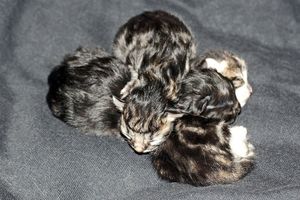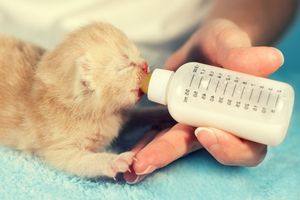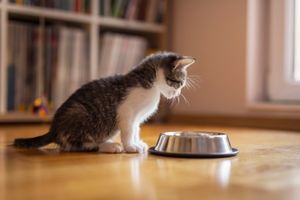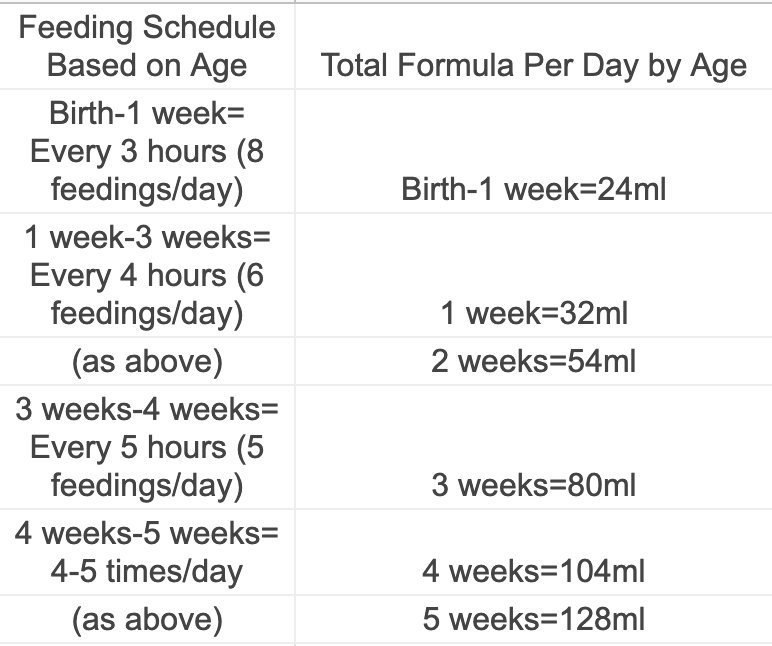So, you’ve taken on a litter of orphan kittens—now what? Hand-raising kittens can be a fun if not very-involved learning experience but can also quickly go sour without a few pointers. It is imperative to remember that while the idea of raising these cute, little furballs can be exciting, you are still now responsible for the health, well-being, and growth development of another living being. This article is here to help ensure this whole kitten care experience goes smoothly and without incident.

Heat is One of the Most Critical Factors With Newborn Kittens
First and foremost, keep your kittens warm! Kittens under 10 days old cannot maintain their own body heat, so you will need to supplement heat for them. Your kitten cannot properly digest foods or liquids if they are cold and will most likely refuse food. If the kitten is kept cold for too long, hypothermia kicks in, and your kitten will not survive.
Here are a few ways to keep your kittens warm:
1. Heating Pad-Keep the setting on LOW. Put your heating pad on about half the bottom of your kitten enclosure and lay a towel over the top, so your kitten is not directly on the heat pad. Always leave a cool area (minus a heating pad) for them to move to if they become too hot.
2. Snuggle Safe “warming disc” - This can be used short-term to warm kittens, but it heats via your microwave and must be reheated frequently.
3. Fill a clean sock with uncooked white rice/white beans, tie a knot at the top, and microwave for 60 seconds. This will also require frequent reheating, approximately every 2-3 hours.
Your kitten enclosure temperatures should be as follows: Birth-3 weeks: 85-88F Over 3 weeks: approx. 79F

Kitten Feeding Considerations
NEVER use human milk replacement, puppy milk replacement, or cow milk. ALWAYS use a specially formulated kitten milk replacement. Some common brands include KMR, Just Born, and Breeder’s Choice. However, your veterinarian is always available to make recommendations.
A kitten should drink 8 milliliters of formula per ounce of body weight per day (see chart below).
Feeding Schedule Based on Age Total Formula Per Day by Age
Droppers or syringes are acceptable but ideally, use a specifically designed nursing bottle available at your local pet store. Nipple-hole size is essential. If the bottle is inverted, the formula should drip slowly from the nipple. Use a small pair of scissors to make an “x” in the nipple, or use a large, heated needle to make a hole in the rubber nipple.
Warm formula in the bottle. You can get a coffee mug with hot tap water and float the bottle with the formula in it for about 10 minutes. Test the temp of the milk on your forearm before offering it to your kitten. The temperature of the milk should be about 100 degrees Fahrenheit.
Place your kitten on a warm towel on your lap with the kitten on their belly. NEVER tip a kitten on their back during feeding as this can cause aspiration or the inhalation of liquid into the lungs. Ease the nipple into the kitten’s mouth. It is often helpful to have some milk on the nipple so the kitten tastes it and begins to suckle. It likely goes without saying but, well, we're veterinarians so we want to emphasize the importance being gentle with these delicate, little beings. Never force the formula down their throats!
If your kitten refuses to feed, first ensure they are adequately warmed. If the problem persists, contact your veterinarian.
Feed your kitten until they are comfortably full but do not allow the stomach to become tight or distended. When they are full, tiny formula bubbles will form around their mouth, and they will spit the nipple out.
Stimulating Your Kitten
You MUST stimulate your kitten to urinate/defecate after each feeding as young kittens are not able to eliminate on their own for the first few weeks. As a general rule, I typically stimulate the kitten before and after a feeding. You will need soft cloths or cotton balls and warm water to do this. Dip the cotton ball in the warm water, squeeze out the excess water, and gently massage your kitten’s lower abdomen/anal area. This is similar to what the mother cat does and should cause your kitten to eliminate. Do not be concerned if your kitten doesn’t defecate after every feeding. Normal stools should have a toothpaste consistency and are yellow or mustard-colored. Urine should be clear and not dark yellow, as dark yellow indicates that the kitten is not getting enough water. If your kitten has diarrhea, you may be feeding too much, or the formula is too rich. Try diluting the formula. If the problem persists, contact your veterinarian.

Weaning, Litter Box Training, and, Well, Growing Up!
At 4-5 weeks, introduce a small box or pan with kitty litter to your kitten’s enclosure. To teach your kitten to use it, put them in the box and use their front paws to make a scraping motion in the sand. What’s especially helpful is if you catch your kitten eliminating somewhere they shouldn’t, you can pick the kitten up and put them in the litter box. Also, begin offering semi-solid foods at this age. Wet kitten food and moistened (with kitten formula) kitten chow can be left in the enclosure at all times so your kitten can begin to experiment with it. Change it out frequently as it will spoil quickly, or your kitten may eliminate in it.
Once your kitten is interested in eating independently, continue to offer bottle feedings 4-5 times a day. You will probably notice your kitten becoming decreasingly interested in the bottle as they begin to eat more on their own.
Your kitten should be weaned at 6-8 weeks, (mostly) litter box trained, and ready to start their kitten vaccinations! Hooray! Call us to set a time to have these done and enjoy your successful journey into the world of orphan kitten raising!
A Small Note Regarding Kitten Death
Sometimes, despite your best efforts, a kitten will pass away during the first few weeks of their life. FKS, or Fading Kitten Syndrome, is the equivalent of SIDS (Sudden Infant Death Syndrome) in human babies. It is when your kitten appears healthy but begins to fade abruptly. It can be a very distressing time for you, but it is essential to remember that you have done everything in your power to give this kitten a fighting chance, and they will be forever grateful to you for dedicating such time and love to their short life. We understand the grief associated with losing a loved one, so if you need questions answered or just need someone to listen, please don’t hesitate to contact us!


